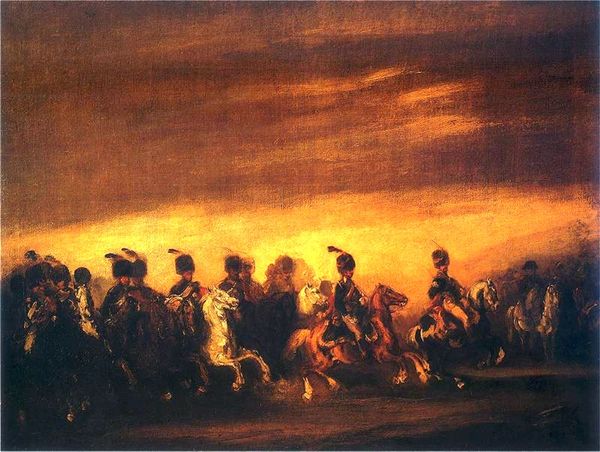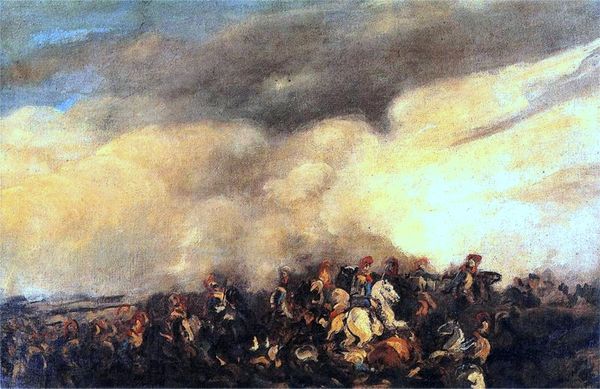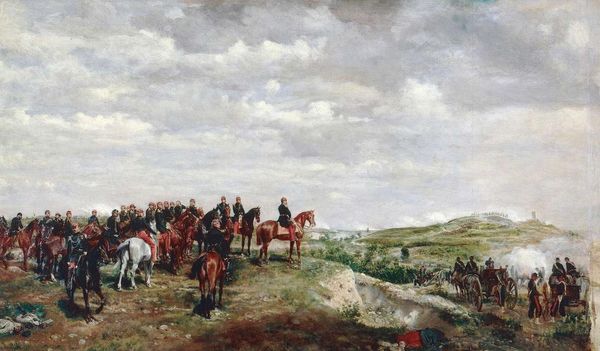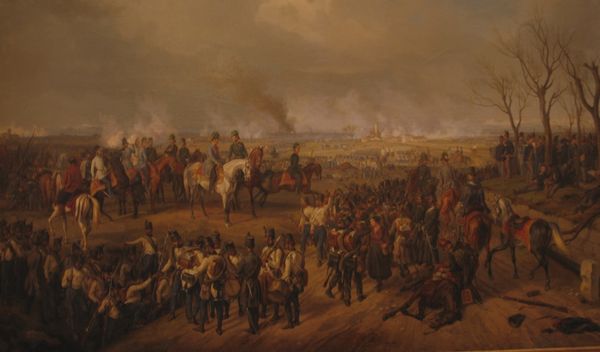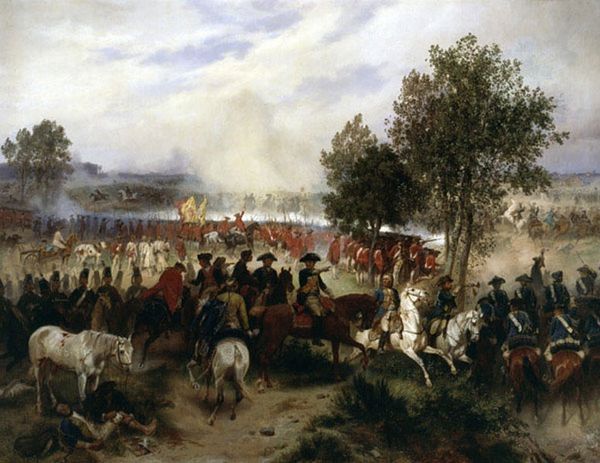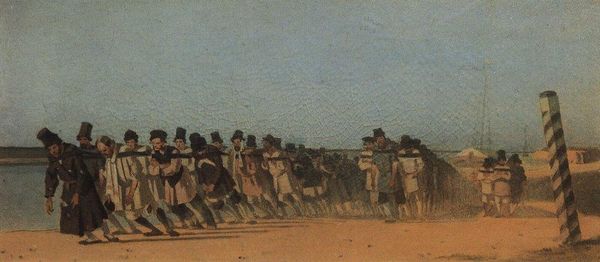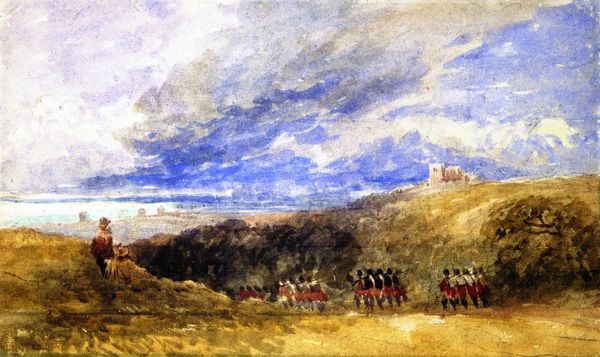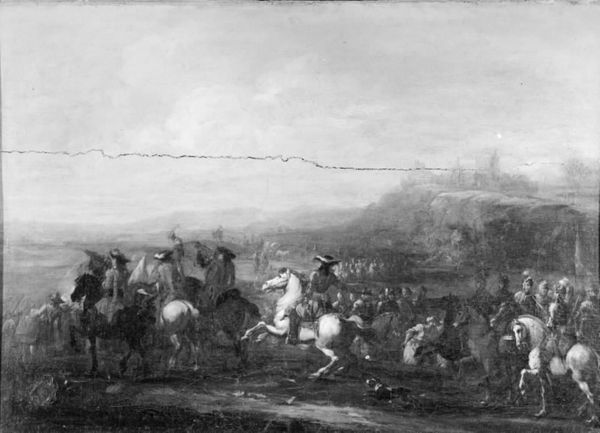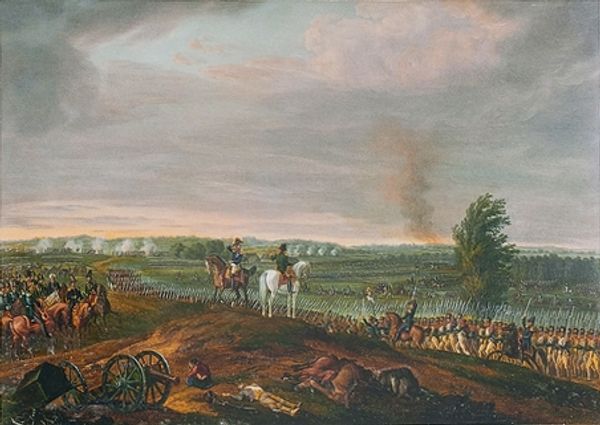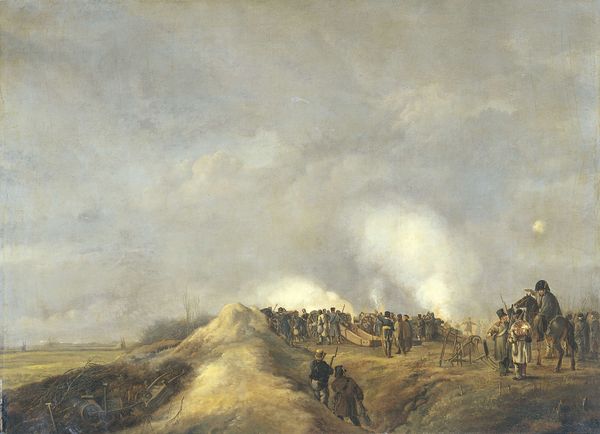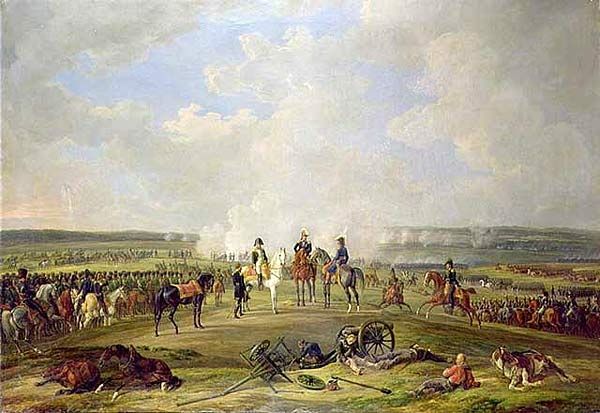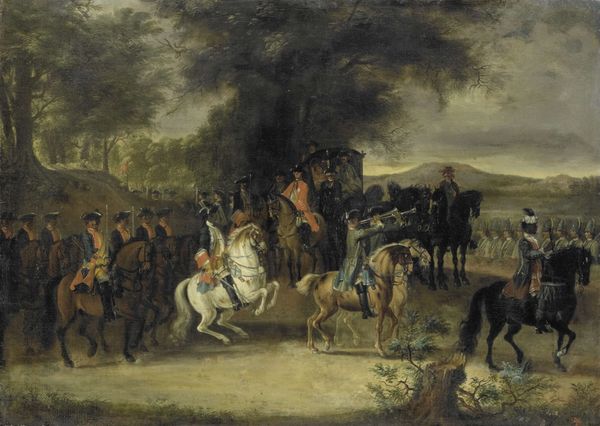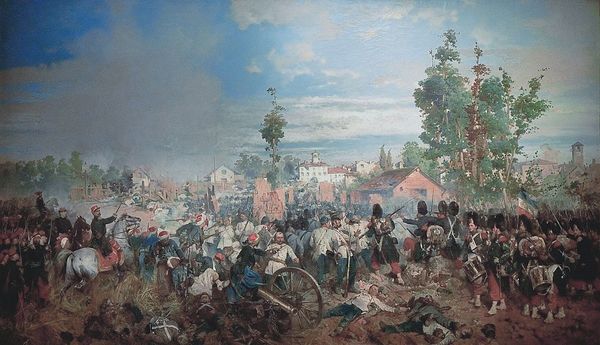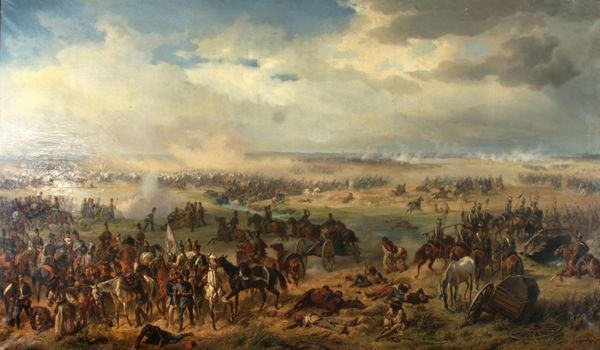
painting, oil-paint
#
painting
#
oil-paint
#
landscape
#
figuration
#
oil painting
#
romanticism
#
history-painting
#
expressionist
Copyright: Public domain
Curator: I’m struck immediately by the energy. Despite the hazy landscape, there's such dynamism. Editor: That’s certainly present. What you are looking at is Piotr Michałowski’s oil on canvas, titled “General Dwernicki Conducting Polish Uhlans”, from around 1840. It resides, as you know, in the National Museum in Warsaw. Curator: The palette definitely enhances that feeling. Earthy browns dominate, punctuated by the glimmers of the soldiers’ white uniforms, pulling you through the composition toward a very atmospheric sky. Is it dawn, perhaps? Or dusk? Editor: Likely the latter, fitting for its narrative content. General Dwernicki led his Uhlans during the November Uprising, an unsuccessful rebellion against Russia. Michaowski painted many scenes depicting Polish military heroes, playing a role in sustaining national identity. Curator: The image of the horse is prominent in Romanticism, wouldn’t you agree? Think of Gericault or Delacroix; the power and wildness of the animal often becomes intertwined with a sense of freedom and heroism. This composition uses that visual language for the Polish cause. The general's pale steed certainly looks heroic. Editor: Precisely. The equestrian portrait became an important symbol in Poland due to its long military tradition. We see a resurgence during the era of national awakenings and romanticism. Remember, Poland was partitioned; representations of its military prowess acted as visual reminders of its former glory and potential liberation. Curator: Absolutely, these images are not just about battles, they served as vessels for hope and defiance during a time of political turmoil. Michałowski presents Dwernicki as a symbol. What do you see in this specific symbolism? Editor: The fact that it is set at sundown. Here, the fading light could symbolize both the end of a day, but also a nation yearning to rise again. In romantic art the image of fading sun always suggests the longing to recapture what is lost. In Michałowski's "General Dwernicki..." we see a cultural memory persisting, awaiting a moment of resurgence. Curator: A fitting conclusion, framing art as active memory and potential change.
Comments
No comments
Be the first to comment and join the conversation on the ultimate creative platform.
